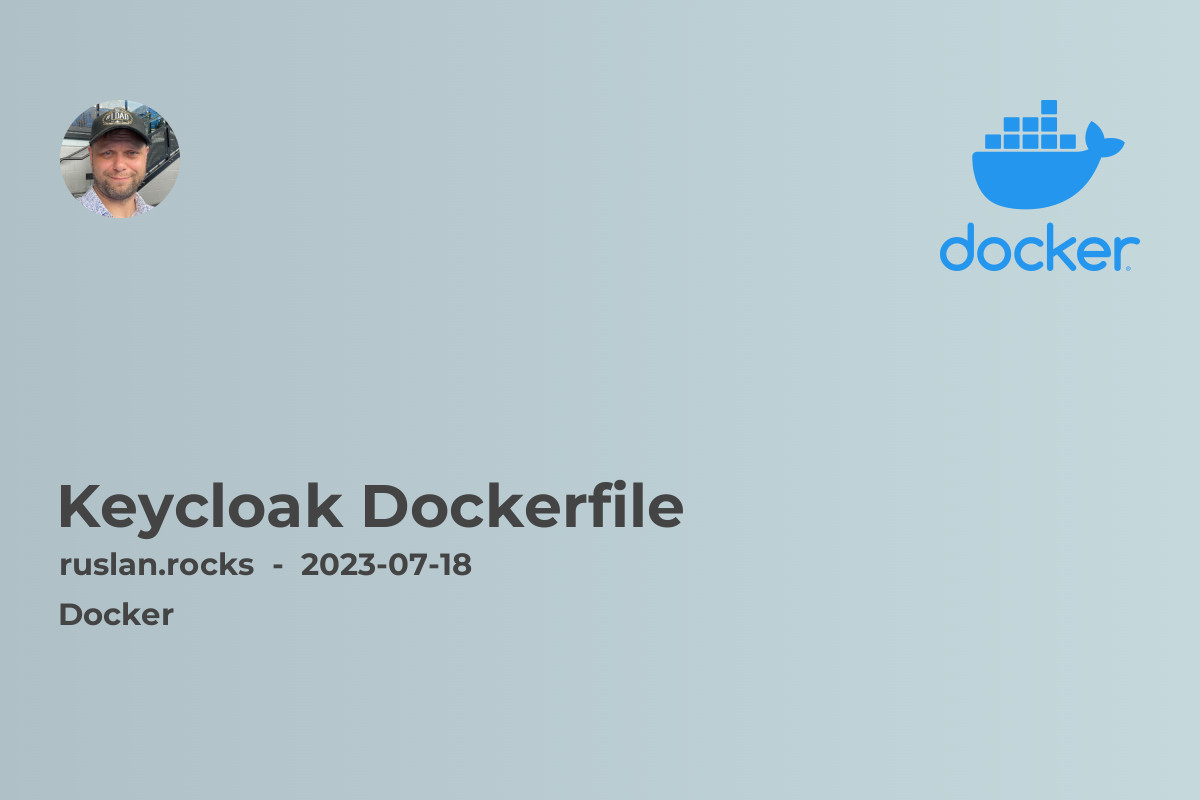- What is Keycloak?
- Creating a Keycloak Dockerfile
- Running the Keycloak Docker Container
- Advantages of Using the Keycloak Dockerfile
- Related Topics

Are you looking for a convenient way to package and deploy your Keycloak identity and access management solution? Look no further than the Keycloak Dockerfile. This powerful tool allows you to create a containerized version of Keycloak, making it easy to manage and deploy across different environments. In this article, we will dive into the proper structure and usage of the Keycloak Dockerfile, providing you with insights on how to harness its power effectively.
What is Keycloak?
Before we delve into the details of the Keycloak Dockerfile, let's first understand what Keycloak is. Keycloak is an open-source identity and access management solution that simplifies and secures the process of authenticating and authorizing users in your applications. With Keycloak, you can easily add features like single sign-on, social login, and multi-factor authentication to your applications, all while maintaining high security standards.
Creating a Keycloak Dockerfile
To begin using the Keycloak Dockerfile, you first need to create it. Start by setting up a basic Dockerfile structure and choose the appropriate base image. For example, you can use the OpenJDK image as a base, which provides the necessary Java runtime environment for running Keycloak.
FROM openjdk:11-jre
Once you have the base image set, you need to install Keycloak and configure it within the Dockerfile. This includes copying the Keycloak distribution ZIP file into the container and extracting it to the desired location.
COPY keycloak-<version>.zip /tmp/
RUN unzip -q /tmp/keycloak-<version>.zip -d /opt/
Next, you will need to configure any necessary environment variables, such as the database connection details and Keycloak realm settings. These variables can be passed into the container at runtime or set within the Dockerfile itself, depending on your requirements.
ENV KEYCLOAK_VERSION=<version>
ENV KEYCLOAK_HOME=/opt/keycloak-<version>
Now that Keycloak is installed and configured, you can add any additional dependencies or modifications to the container, such as custom themes or plugins. These can be included by using the COPY command in the Dockerfile.
COPY themes/ /opt/keycloak-<version>/themes/
COPY plugins/ /opt/keycloak-<version>/standalone/deployments/
Once you have completed all the necessary steps, you can build the Keycloak Docker image by running the docker build command.
docker build -t my-keycloak-image .
Running the Keycloak Docker Container
With the Keycloak Docker image built, you can now run the Keycloak container using the docker run command. Be sure to map the appropriate ports and volumes based on your requirements.
docker run -d -p 8080:8080 -v /opt/keycloak/data:/opt/keycloak-<version>/standalone/data my-keycloak-image
Once the container is up and running, you can access the Keycloak administration console by visiting http://localhost:8080/auth/admin in your web browser. From there, you can configure and manage your Keycloak realm, users, roles, and other security features.
Advantages of Using the Keycloak Dockerfile
The use of the Keycloak Dockerfile offers several advantages in terms of portability, scalability, and ease of management. By containerizing Keycloak, you can easily deploy it across different environments, ensuring consistency and reducing deployment-related issues. Docker also provides flexibility in terms of scaling Keycloak instances based on demand, allowing you to handle high traffic loads effectively.
Furthermore, the Keycloak Dockerfile simplifies the installation and configuration process, streamlining the setup of Keycloak instances. With a single command, you can have an isolated Keycloak environment up and running in no time.
Related Topics
To further enhance your understanding and utilization of Keycloak and Docker, explore these related topics:
- Docker Compose: Simplifying Container Deployment: Learn how Docker Compose can simplify the deployment of Keycloak and other containers in a multi-container environment.
- Managing Secrets in Docker: Keep Your Data Secure: Understand how to securely manage sensitive information like database credentials within your Keycloak Docker container.
- Docker Volumes: Managing Data in Containers: Discover the importance of Docker volumes in persisting and managing Keycloak data across container restarts and updates.
- Docker Networking: How to Connect Containers: Explore various networking options in Docker to enable seamless communication between Keycloak and other containers.
- Docker Security Best Practices: Ensuring Container Security: Learn essential security measures to protect your Keycloak Docker containers from potential vulnerabilities.
By diving into these related topics, you can further enrich your knowledge and make the most of your Keycloak Docker deployments.
In conclusion, the Keycloak Dockerfile provides a powerful means to package and deploy Keycloak in a containerized environment. By adhering to the proper structure and understanding the usage explained in this article, you can leverage the benefits of Keycloak and Docker to simplify your identity and access management infrastructure. So, why wait? Start containerizing your Keycloak instances today and empower your applications with robust authentication and authorization capabilities.
